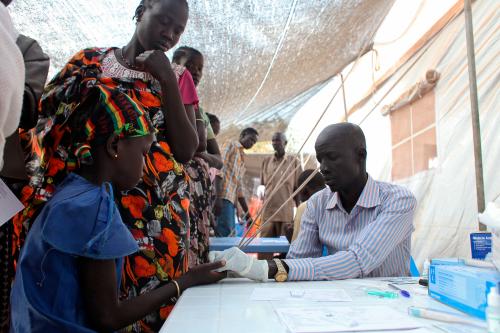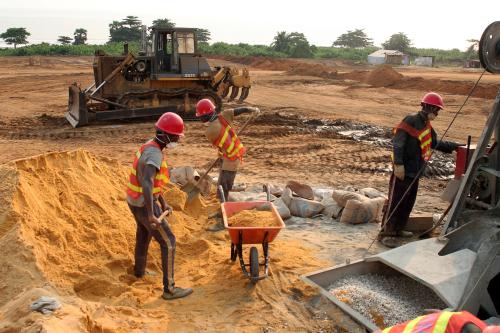The IFPRI-led Agricultural Science and Technology Indicators (ASTI) recently published new data and analysis on trends in government spending on agriculture and agricultural research in sub-Saharan Africa. The chart below, from the report A Comprehensive Overview of Investments and Human Resource Capacity in African Agricultural Research, measures public investments in agriculture and agricultural research from 2000 to 2014.
 Source: Beintema and Stads. A Comprehensive Overview of Investments and Human Resource Capacity in African Agricultural Research. IFPRI. 2017.
Source: Beintema and Stads. A Comprehensive Overview of Investments and Human Resource Capacity in African Agricultural Research. IFPRI. 2017.
According to the data, on average, sub-Saharan African governments more than doubled their investments in agriculture between 2010 and 2014. Research-specific spending, however, has grown at a much slower pace than other agricultural spending for the continent, suggesting that farm support and subsidies, training, irrigation, and extension received more funding than research initiatives did from 2000-2014. Underinvestment in agricultural research could be problematic, the report argues, since a strong evidence base documents the high returns to investment in agricultural research compared to other agricultural inputs. Other studies (also noted in the report) discuss the sizable role agricultural research plays in reducing poverty relative to public spending in other areas such as education, health, and rural road infrastructure.
ASTI proposes four main reasons African countries are not investing more in agricultural research: (1) lag time between investment and return; (2) farmers’ lack of political clout; (3) competing donor priorities; and (4) the short-term focus of many government research budgets. To address some of these issues, ASTI recommends that governments and research agencies diversify their funding sources—e.g., through the sale of goods and services, taxes on commodities, or private sector investment—to mitigate the effects of potentially volatile donor funding, which can undercut long-term research agendas.
Interestingly, this week, ministers of agriculture from the five BRICS countries (Brazil, Russia, India, China, and South Africa) met in Nanjing, China to discuss the importance of agricultural research investments in promoting agricultural growth and eradicating global hunger and poverty. Their conversations focused in part on how BRICS countries are well-positioned to take a leading role among developing countries on agricultural R&D issues, given their strong agricultural research systems.
Shobhit Kumar contributed to this post.
The Brookings Institution is committed to quality, independence, and impact.
We are supported by a diverse array of funders. In line with our values and policies, each Brookings publication represents the sole views of its author(s).







Commentary
Figure of the week: Sub-Saharan African agricultural research spending trends
June 21, 2017